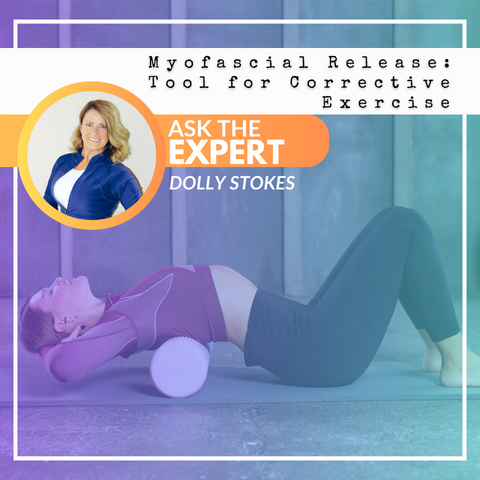Submitted by Melissa Vidito on

By: Dolly Stokes, FiTOUR®
Myofascial release, with both younger and older clients, has proven to be highly successful in helping to correct dysfunctional movement and improve postural deviations.
Made up of collagen and elastin, myofascial tissue surrounds and holds the bones and muscles in place.
When collagen and elastin levels begin to diminish, skin may begin to sag and wrinkles may become apparent. This loss of collagen and elastin occurs not only on the outer surface of the body but also below the skin’s surface. Just as the aging process takes a toll on the collagen and elastin levels of the skin, it also takes a toll on the collagen and elastin levels within the fascia.
These age-related changes in the fascia can affect the architectural structure of the body which, in turn, can lead to poor posture and dysfunctional movement.
In addition to the natural aging process, the health of the myofascial tissue can be dependent upon the level of hydration and flexibility of the tissue. Tissue that is dehydrated and bound can lead to restricted movement. Restricted movement can lead to dysfunctional movement. On the flipside, dysfunctional movement can lead to tissue that is dehydrated and bound.
As with the question “Which came first, the chicken or the egg?”, it can often be difficult to discern whether dehydrated and bound fascial tissue leads to restricted movement thereby causing dysfunctional movement, or whether dysfunctional movement leads to restricted movement which causes dehydrated and bound tissue.
Through time and progression, SMR practiced regularly can help to rehydrate the fascial tissue and release bound fascia which can lead to improved performance and better posture. This, in turn, can reduce pain and help to create higher levels of function and performance.
Due to the effects of aging on the soft tissues, if you are including SMR in your older adult programming it is important to consider orthopedic issues as well as the fact that older tissue is more fragile than younger tissue.
Here are some tips for SMR with older clients:
-
Develop body awareness through mind/body activities when initially launching an SMR program.
-
Avoid releases that require supporting, pulling, or pushing with the upper body.
-
Apply light pressure with soft surface tools.
-
Perform releases with slow, controlled movement.
-
Allow extra transition time between releases.
-
Avoid numerous changes in body position during a SMR session.
-
Know physical limitations and skill levels of clients.
Education in myofascial release can be a useful tool to have in your professional toolbox and can be a game-changer for the success of your clients. When your clients begin to feel and see the positive effects of SMR, they will applaud and appreciate your dedication to helping them achieve lifelong health.
FiTOUR® offers Primary and Advanced Myofascial Releasecourses which provide valuable information on how to perform myofascial releases with your younger and older clients. The Primary Myofascial Release course is FREE!!!
The FiTOUR® Advanced Active Aging course provides a section specifically devoted to SMR for older adults.
Dolly Stokes has been a certified professional fitness trainer for over 30 years and has an associate degree in massage therapy. She has been a FiTOUR® ProTrainer since 2002 and has authored 11 FiTOUR® courses including the Myofascial Release Primary and Advanced courses as well as the Active Aging Primary and Advanced courses. Dolly and her husband, Jeff, own Stokes Method Studio in Fairhope, AL where Dolly specializes in functional and corrective exercise.
